 Hello, My name is Lee and I am a fat person.
Hello, My name is Lee and I am a fat person.Actually, I'm not that fat right now but I have been for most of my life. Since statistics suggest that the cure rates for obesity are not as good as the cure rate for alcoholism (or for heroin addiction, for that matter) it is entirely appropriate to borrow that famous intro line from Alcoholics Anonymous. Once a fatty, always a fatty (at least potentially.) I may not be fat right now but I know that I am one twinkie away from being a blimp once again.
The good news is that I seems to have found a program of treatment which works to control the problem. It isn't especially unpleasant -- or crushingly expensive -- and it doesn't require me to do weird things with my brain. On my new "diet" I eat pretty much the same stuff as I ate before, when I was fat. I eat in ordinary restaurants and I don't order the flavorless "healthy" foods. I never leave the table hungry and, while I may get a bit peckish, now and then between meals, I am never grindingly hungry. I never obsess about food, counting the seconds -- each and every one -- until my next meal.
The SecretI enjoy my food because I eat food that I enjoy. In the 22 weeks since I started I have lost 37 pounds at a fairly-constant rate of 1.6 pounds per week. [Update 12/05/2006: Make that 42 weeks and 72 lbs at 1.7 pounds a week.] And it's been
fairly easy. What's the secret? Here it is: I don't eat very much any more. I order a small lunch and get a to-go box for half of it. At supper I tend to dine on the appetizer menu. That's where most of the tastiest food is but the portions are really small. For those of you whose eyes just glazed over -- the one's who think that you can no more eat like I eat than you can grow wings and fly -- remember: I am one of you -- a fat person. If I can do it, so can you.
Actually, there is a second half to the secret. I mentioned the first half -- that I no longer eat very much -- so you would know that my weight-loss comes from a non-controversial source:
caloric reduction. I'll get to the second half of the secret in a minute but first I will explain the title of this posting: "The Magic Feather Diet." As many of you may have guessed it's a reference to the Walt Disney film
Dumbo. In the film, Dumbo, a small elephant, learns to fly using his unnaturally large ears as wings. His friends know he can fly but Dumbo lacks confidence to try. They give him an ordinary feather to hold, telling him it is a
magic feather, and with the feather clutched in his trunk he takes flight.
 This link
This link to a Google image search should bring up images of Dumbo and most of the drawings of Dumbo flying will show the black
"magic" feather clutched in his trunk. It will look something like this.
One last note before I get on with my piece. While you are reading please bear in mind that I am neither a doctor nor a researcher. I am a computer jockey by trade and anything that sounds like "science" in the following should be taken with a large grain of salt (this
salt crystal the Smithsonian has on display in their mineral exhibit would do fine.)
The Magic Feather
So here is
my magic feather. This stuff is a blend of three viscous dietary fibers mixed in just the right ratio to form the thickest possible glop when mixed with water at a pH similar to the environment in the stomach. You can read about it in
this flyer [PDF] from one of the guys who invented it. I have tracked down the studies he references and they appear to be legit and I can personally testify to the stuff's helpfulness when one is trying to shed a few pounds.
[Yes, yes, I know. Diet pills are useless, almost by definition, and that's the ones that are not actually dangerous. Hang with me, I'll get back to the diet pills issue.]A Little BackgroundScientists who study obesity and its related health concerns, especially diabetes, have noticed a combination of factors which seem to go together to spell trouble with a capital "T". Well, not a "T" actually, its an "X" -- as in Metabolic Syndrome X. You can read a bit about Metabolic Syndrome X in
this brief article from About.com in which the author, Dr. Richard N. Fogoros, M.D, says, in part --
...While there is no drug treatment that directly reverses the insulin resistance that causes syndrome X, there is, in fact, a way to reverse the insulin resistance - diet and exercise. Patients should make every attempt to reduce their body weight to within 20% of the "ideal" body weight calculated for age and height. (The ideal diet for this condition is a low calorie, low-cholesterol diet with plenty of fruits, vegetables, and fiber.) And patients should incorporate aerobic exercise (at least 20 minutes) into their daily lifestyle. If both of these can be accomplished, most of the metabolic abnormalities seen in syndrome X substantially improve.
However, human nature (and human metabolism) being what it is, the majority of patients with syndrome X cannot accomplish these goals. In these cases, each metabolic disorder associated with syndrome X needs to be treated individually, and aggressively. [The highlighting is mine.]
If you have never heard of Metabolic Syndrome X you should read the whole thing. It's quite short and provides a good introduction. I do disagree with him on one point, which I have highlighted. I think that by adhering to the Magic Feather Diet most people will find that it is possible to control their weight.
Healthy Caveman SyndromeMy take on Metabolic Syndrome X is that for most of our evolutionary history it was simply not a problem. In fact, in a society that subsists in large part on hunting, some of the aspects of the metabolic Syndrome can be an advantage. People with the syndrome react quickly to food. After they eat their blood sugar spikes immediately which triggers a similarly fast release of high levels of insulin. The high insulin level causes cells to store the blood sugar as fat and the blood sugar drops causing hunger to return. The stomach efficiently liquefies the food and dumps it into the small intestine. Once the stomach is empty it releases signaling compounds such as ghrellin to indicate that it is ready for more food. Eating sets off a cascade that makes the Metabolic Syndrome X caveman even hungrier and a bit grouchy. The other, non MSX cavemen are unlikely to come between Mr. Hungry and his lunch until he is stuffed for fear of getting hit over the head. This roller-coaster ride of blood sugar and insulin rise and fall is very unhealthy if it happens every day -- but if food is only available occasionally then the person who most efficiently eats when the food is available and stores as much fat as possible will have an advantage.
So, from an evolutionary point of view, there is nothing wrong with having a metabolism that very efficiently converts food into body fat. When your available food consists of about 200 calories a day of twigs, roots and small insects supplemented by an unrefrigerated elk carcas once a month then you better like to eat when there's food around. It is only in today's unnatural world -- a world where we all swim in a sea of food -- that it becomes a problem. Nature doesn't seem to have prepared many of us to survive in Pizza Hut.
The Blame GameWhich brings us to one of the less appealing aspects of the whole obesity thing: deciding who to blame for it. Is Pizza Hut
evil? McDonalds? Ben and Jerry's? I don't think so. [Except maybe for that last one... a little bit evil, maybe -- especially since they have "retired" White Russian, my favorite flavor... Where was I? Oh yes...] Fast food places make their money by giving people what they want and people like big, fattening food. McDonald's is not our mom.
And speaking of dear old Mom, other people like to blame being fat on their moms. We were overfed when we were babies, they say, and now we have "fat cells." And if you have "fat cells" you are just screwed, dietetically speaking. When you try to starve your fat cells they release chemicals in your blood that make you hungry. It's not our fault. Our
moms made us this way. Not that you have to be fat yourself to play this edition of the blame game; how many times have you seen a fat woman waddling down the street with her fat children waddling after her like baby ducks and thought: "I'll bet she is teaching them terrible eating habits?" You can blame
other people's moms, too.
But another explanation for the fat mother with fat children phenomenon is to remember that Metabolic Syndrome X tends to run in families. Maybe it is God who makes us fat! Blame God! Or, if you prefer the scientific to the theological, maybe it is genetics and the reason we need fat jeans is because we have fat genes. Either way, it's not our fault!
Other people call that a cop-out. If fat people would just eat less, exercise more and select more sensible foods then they wouldn't be fat people any more. Studies have shown that people with a genetic tendency to overweight will gain slightly more weight than genetically thin people when eating the same diet -- but not very much more. 95% of the difference in weight is explainable by differences in the number of calories eaten. If overweight people had a bit more willpower they could eat less and be thin. Seen that way overweight is a personality disorder. It's our own fault that we are fat.
But, of course, none of the editions of
The Blame Game are at all helpful. Overweight people routinely manage to find the willpower to do other things that require self-control and delayed gratification. They save money to buy houses, they earn advanced degrees, most have good work habits. They do a million things that are
hard that some of their thin friends can't manage. It does them no good to beat themselves up about being fat. As for the other factors, the fact of the matter is that Pizza Hut is going to be there and we will just have to deal with it somehow. If our fat cells are keeping us fat it doesn't matter where they came from -- let's leave our moms out of this. What's more, the genes you've got are the genes you've got. Maybe someday genetic research will turn up something really useful -- a magic pill that makes us thin -- but that hasn't happened yet and I wouldn't hold your breath.
As it happens, "holding your breath" is my favorite analogy for a fat person trying to lose weight by willpower alone. Dieting is like holding your breath. Most obese people can do it for a while but it is unnatural and very uncomfortable and sooner or later you gotta come up for air, and the weight all comes back. The usual cliche states that "Diets don't work" which is quite true -- but the cliche continues "Permanent weight loss requires a lifestyle change" which I have never found helpful. It's like saying "Holding your breath doesn't work. To live underwater permanently requires you to become aquatic." When you ask how one goes about becoming aquatic the answer always sounds quite a lot like holding one's breath forever.
I'd love to be aquatic, but I'm not. I haven't grown gills or found a way to do without oxygen. But I do seem to have found a snorkle and I am confident I can stay underwater long enough to get the job done. Or, to unwind my metaphor, I still have the metabolism that gives me a marked tendency to be overweight but I have found a way to deal with it. I still need to consciously diet to lose weight but I have found a way to make dieting sufficiently painless that I can easily see myself doing it on a more-or-less permanent basis.
Diet PillsI have found the PGx fiber blend quite helpful as I have been losing weight and apparently other people have too. So why isn't there more of a public buzz about it? The problem is that unscrupulous marketers have made the subject of "diet pills" so toxic -- the gap between typical product claims and performance is so huge -- that there is simply no way to get any traction through advertising. And even worse, some of the most egregiously over-hyped pills are closely related to PGx. Remember the magic "Carb Blocker" pills that would make you thin without dieting by blocking absorption of carbohydrates so you would lose weight, no matter what you ate? Remember those?
They're still out there. And about half of them contain some glucomannan, the main ingredient in PGx.

In point of fact, studies have shown that glucomannan, when taken with water before meals, can reduce the uptake of carbohydrates. Depending on the dosage the studies have suggested that you can expect glucomannan to "block" between 30 and 130 calories of carbohydrates a day. To put this in perspective, you can accomplish much the same thing by putting an extra ice cube or two in each glass of Coke. In theory those few calories a day can add up to a couple of pounds of lost weight a year but it is scarcely the "
magic" pill that people are looking for -- and that the advertisers claim to be selling.
The maddening thing about this is that by siezing on this minor effect of viscous dietary fiber as a weight-loss aid the ham-handed marketeers have muddied the water, totally obscuring a subtler, but more helpful and better documented effects. While the fiber supplements do not totally prevent the absorption of carbohydrates, they do slow it down dramatically. As food enters the stomach it mixes with the gooey, largely-indigestible fiber mix that is already there. Instead of producing an immediate spike in your blood sugar the carbohydrates in the food are absorbed more slowly as your gut sorts out the digestible carbohydrates from the molecularly similar long polysaccharide chains of the fiber. The slower rise in blood sugar produces a muted insulin response. The process of converting glucose to fat doesn't go into high gear and you are less likely to suffer from the "
hungry an hour later" phenomenon that people associate with Chinese food (which generally contains such huge amounts of starch and sugar that even people without Metabolic Syndrome X experience a hypoglycemic crash after eating it).
As well as helping to regulate your blood sugar and insulin response the fiber supplements simply tend to fill up your stomach. This is especially true of PGx which is formulated to produce the maximum volume of goo with much smaller doses than with glucomannan alone. This means that when you start your meal your stomach is half full and tends to fill up quickly. This helps you eat less, especially if you eat slowly to give your blood sugar a chance to come up a bit. Your stomach likes to work on the food until it is nicely liquefied and with PGx that tends to take quite a while. The food stays in your stomach longer which delays the release of ghrellin, an appetite causing chemical that your stomach uses to indicate that it is ready for the next meal.
The exact formula for the PGx fiber mix is proprietary but the ingredients list consists of Konjac root extract, Sodium Alginate, Xanthan Gum and Mulberry leaf extract. Konjac flour is made from the root of the "Devil's Tongue" plant. Called Konnyaku in Japanese it has been used to make noodles for thousands of years. (Check out Iron Chef episode IC1A11 -- Konnyaku Battle -- for recipe ideas.)
Glucomannan, the main constituent of Konjac root extract, has some
very promising research for treatment of obesity
as does Sodium Alginate. The
Xanthan Gum, another dietary fiber used in salad dressings and petroleum production, is probably there because of
this synergistic reaction that makes the Glucomannan even more viscous than it is already when you mix it with Xanthan Gum. And the Mulberry leaves? Well, you have to have something weird in pills like these and some research suggests that Mulberry leaves are helpful for controlling glucose levels.
All of the ingredients are approved food additives and the Konjac flour is not just as an
additive but qualifies as a
food as well. This suggests that PGx is probably pretty safe to use. There were some pre-packaged fruit jellies from the far east that were withdrawn from the market because the Konjac gel they used was too firm and constituted a choking hazard for small children and the elderly. The problem was confounded by the fact that Konjac/Xanthan gels do not melt at body temperatures like most other gels. (Those Konjac gels have been reformulated and have returned to the US market -- which is good because the Lichee flavor is a family favorite and we missed them.) For similar reasons, people who have difficulty swallowing or have intestinal obstructions should probably avoid PGx in capsule form and look for it in the (less satisfactory but probably still helpful) liquid formula.
So, the science behind PGx is decent, but none-the-less, my
magic feather consists of "diet pills." That's just something I'll have to live with. But, unlike other diet pills that claim to be a diet in a bottle, my pills do not include the diet. You have to provide your own. I'll provide a few comments about mine but you can feel free to use the
magic feather with Weight Watchers or Southbeach, or any other sensible diet you like (or, more accurately, the one you hate least.)
Advice from the Mouse in your HatHere I will offer some random vague advice for losing weight. First,
grasp the Magic Feather by taking a few PGx capsules before each meal. I take two of them before breakfast and four before lunch and supper. I also take two capsules of Korean (Panax) Ginseng -- a bit more than a gram -- with my lunch and supper pills. I accompany the pills with
at least 16 oz of water and usually more like a quart. Since the fiber mix turns water into stomach-filling goo I try to add plenty of water. During the meal I make it a point to continue to drink water with my food -- more or less normally -- as if I hadn't chugged a quart before the meal.
In a restaurant, ask the waiter to bring you a large glass of room-temerature water (tap water, no ice) and swill it down with the pills before you order. Don't worry about making a fuss about the ice -- it will make people think you are European. Its easier to take a fist-full of pills if the water isn't icy cold and it's easier to drink the whole glass of water. [
In hispanic restaurants water without ice is "agua, sin hielo" -- AHwuh Seen eeAYlow -- and if you ask for it in awful Spanish the waiter will almost always remember.] After the first glass you can tell the waiter that ice is OK but 9 our of 10 times it won't work. Drinking warm water with your meal is the price you pay to be thin.
Learn to e-a-t s-l-o-w-l-y. Yes, I know that this is the same hateful advice you have been given all your life, advice which was absolutely no help at all, but give it one more try. Most of the dieting advice in this section is quite conventional; the only difference is that when you take the pills it seems to work, which it never did before. Eat things you like the taste of and enjoy it. But take small bites. Enjoy each one -- the flavor, the mouth-feel, the texture -- and between bites chat with your friends, think about your blog, or find something else to do that involves a bit of time, pleasantly spent. What we are doing here is spreading out the calories and letting your blood sugar come up gradually. You will find that with the fiber in your stomach (so it isn't so echoingly empty) the process will seem a lot like eating. Every now and then take another sip of your water to clear your palate between bites -- it makes your food taste better and continues to fill up your stomach.
Stop eating when you find you are no longer hungry. This one is
really hard at first. Most obese people have learned from bitter experience that if they stop eating at the point where they are no longer particularly hungry then they
will be hungry an hour later and they will be miserably hungry an hour after that. To avoid that running-out-of-gas between meal experience they continue eating, trying to get enough food in their stomach for there to be something left for them to use a few hours later -- after the initial blood sugar spike from the meal has been processed and stored as fat. This extra food adds to the dangerously high blood sugar spike but the symptoms of too much blood sugar are mostly long term and the symptoms of hypoglycemia are immediate and unpleasant. They have learned how much food they need to eat to feel ok until their next meal -- its too much for long-term health but it gets them through the day.
I promised that the Magic Feather Diet didn't involve doing anything weird with your brain. This business of learning to stop eating when you are not hungry represents my closest approach to breaking that promise. There are a few
confidence building techniques that I used which I think will work for other people, but I can't be sure. Here they are:
* In restaurants, order your meal in segments. Pick something small on the menu that you are sure will fit in your diet.
And pick out the other item you will order if, after eating the first item, you find that you are still hungry. Order the first item and tell the waiter to check back later. Take your pills with lots of water and when your food comes eat it slowly and enjoy it. Sit for a minute and then, if you are still hungry order the other item.
* To-go boxes are your friend. When you realize that you are no longer hungry stop eating immediately. In restaurants, get a to-go box for the rest of your meal. If you are eating at home go ahead and put that half a pork chop in a plastic container and put it in the fridge. If you have access to a refrigerator at work take the other half of your lunch back to work with you. If you get excessively hungry later go and eat some of it -- but do so a little bit at a time and stop when you are not hungry. Always drink at least 8 oz of water whenever you eat anything.
* Keep some not-particularly exciting food near you at all times but make it something that requires a small amount of preparation to eat. I rather like those 5 oz cans of vegetables -- canned peas are good -- or individual-serving-sized packets of instant cheese-flavored grits. If you get excessively hungry, take a break and eat a little something (I shoot for 100 calorie snacks) and, again, be sure to drink at least 8 oz of water.
* Learn that it's ok to be a little-bit hungry. Most overweight people have learned from experience that being a little bit hungry is a warning sign that they will be insanely hungry and will feel awful in half an hour. Their blood sugar swings between extremes and they have learned that a feeling of moderate hunger is usually a warning of an imminent hypoglycemic episode so they respond to even moderate hunger by eating large amounts of food to head off the problem. PGx really does smooth out the blood sugar peaks and valleys. Sometimes being a little bit hungry means that you are a little bit hungry and that in half an hour you will still be a little bit hungry -- or maybe you'll get over it.
One day, not long after I started using PGx I was getting a bit hungry in the afternoon at work. I promised myself I would hit the breakroom and zap a package of cheese grits just as soon as I reached a stopping point. When I finally found the problem with the program I was debugging, and had a spare minute, I realized that I wasn't hungry any more. I had gotten over it. It was uncanny. I had a cup of tea instead of my snack and, over the course of the next few weeks I experimented by ignoring slight cases of the hungrys and only snacking when I was definitely hungry. I found that one third of the time the hungrys would just go away, one third of the time I would simply continue to be moderately, but not unpleasantly, hungry, and the other third of the time I would get hungrier and go eat something.
The idea of all these confidence-building exercises is to always have enough food available to make it to the next meal even if the magic pills don't work. The difference is that instead of putting it all in your stomach you put some of it in the refrigerator and give yourself permission to eat it later if you get too hungry.
Join a Gym and Exercise You are not trying to "work off" calories. It takes an obscene amount of exercise to work off an extra pound. You are trying to add muscle. A pound of muscle requires more calories every day than a pound of fat. The more muscle mass you have the more you can eat without gaining weight. Aerobics are good, in moderation, but for weight loss you want to add as many pounds of muscle as possible. Tell your trainer that you want muscles like the Governor of California.
If eating alone, bring something to read. This helps you to eat slowly. Read a paragraph between bites. At the bottom of each page ask yourself if you are still hungry and consider that to-go box.
If not eating alone, split a meal with someone. There's a Mexican place my wife and I go for lunch that offers a big burrito as their daily special almost every day. I eat one third of it, my wife eats one quarter of it and five twelfths goes into a to-go box from which she gets two more lunches. [
Sorry about all the fractions.] That's four meals for five bucks. The PGx pills aren't free but, when you figure in your savings on food they pretty much pay for themselves. [
One note: You may be on a diet but your waiter isn't. What with all the water-no-ice, and the to-go boxes for a five dollar check, you will keep the waiter busy. Be sure to add a couple of extra bucks to your fifteen percent tip.]
Buy the pills online. The list price for a bottle of 180 capsules is over twenty-eight dollars. If you shop around you can find it online for about fifteen (as of the last time I placed an order.) The last few times I have ordered them I have used vitacost.com -- they have good service and seem to have the lowest prices for stuff like this.
Don't step on the scale too often. The amount of weight you lose during a day of sensible weight-loss is much less than the amount of weight you lose during the average pee. The amount you lose in a week may be less than the weight of last night's supper which is still in your gut. If you are female your monthly water-weight fluctuation can exceed the amount of weight you lose in a month. Stepping on the scale every morning is madness. I step on the scale on the first and the fifteenth of each month (which is approximately once every two weeks.)
Side Effects.About a year ago I posted a humorous piece about dieting called
The R Factor Diet. In it I hinted that the best foods to eat when you need to lose weight are the foods that make you flatulent. The "R-Factor" is the letter "R" that changes the word "F-A-T" into "F-A-R-T". To some extent the Magic Feather Diet represents a return the this theme.
The most commonly reported side effects seem to be gas and bloating. The organisms that live in your gut are a bit like the friends you had in college who would hang around the table while you ate, saying
are you going to eat that? Just because you can't digest glucomannan doesn't mean that the organisms in your gut can't digest it -- or those 30 calories a day of carbs that the glucomannan "blocked". This results in a bit more methane in your gut than you are used to having. Add to this the extra bulk from the PGx binding water into a gel and you can get some discomfort at first. The discomfort generally goes away after a few days and any remaining changes are generally for the better. I had considered a different name instead of the "Magic Feather Diet" but the "Eat Like a Bird, Crap Like a Pony, Fart Like a Force of Nature - Diet" was rather too long and didn't seem as catchy or persuasive.
Placebo Effect?But, you may ask, Dumbo didn't really
need the magic feather, did he? What are the chances that most of the success I have had with PGx is due to the Placebo Effect? I can't really know. There seems to be quite a bit of encouraging research -- double-blind, placebo-controlled studies that found the fiber blend did better than Placebo, and that is encouraging. But, could my particular experience be all Placebo Effect? Sure, it's possible. I don't think it's likely -- but it's possible. I don't know and, to a certain extent,
I don't care. I know I am as thin as I have ever been. I know I have, more or less effortlessly, blown by all the places where previous diets hit plateaus, or failed completely. I guess it could all be self-deception. But if it is, fine. And if you have some weight you need to shed, you might consider letting me delude you, too.
Update: 17 October 2006.A couple more months have past since I first posted this and I have lost another thirty pounds. A few days ago I reached the goal I had somewhat arbitrarily set for myself when I started. Reviewing the situation, I have decided that I can go a bit farther. According to the
Body Mass Index calculations I am still towards the high end of the overweight range. I started my diet at 304 lbs (BMI = 37) and am now at 240 (BMI = 29.2) which is near the high end of the "overweight" category ("obese" starts at a BMI of 30.) The BMI calculations and the ideal weight tables both suggest I lose at least another 30 lbs. I don't plan to lose that much (I think the tables are insane) but I mention it so my readers won't worry that I making myself too thin.
Extra Reading:
Life Extension Magazine: Novel Fiber Limits Sugar AbsorptionJournal of the American College of Neutrition: Emerging Alternate Therapies for Type 2 Diabetes Mellitus Konnyaku.com: About Konnyaku (Konjac)




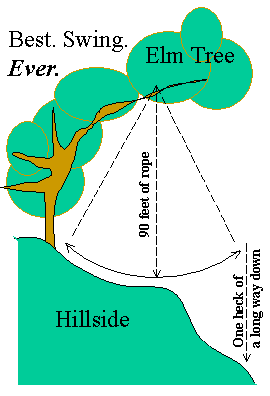
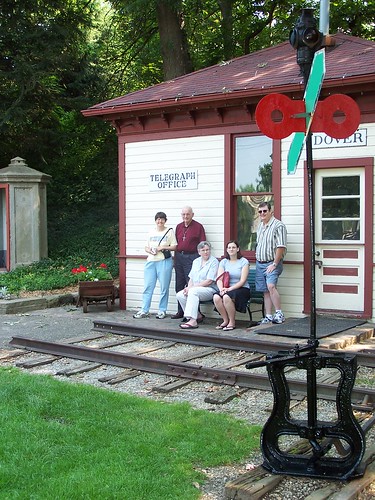

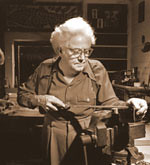

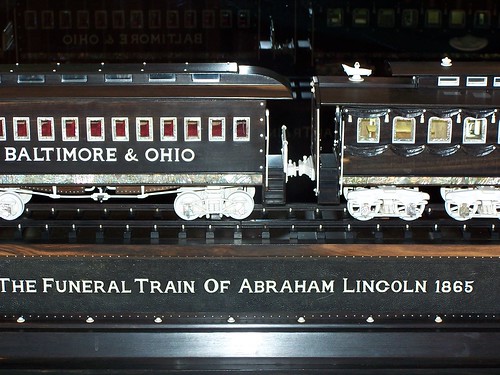
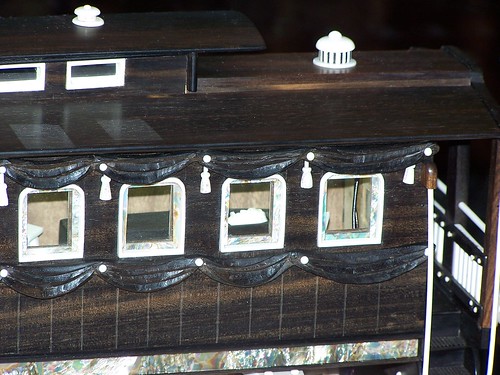
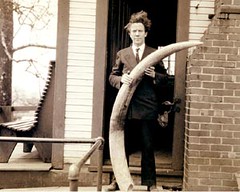
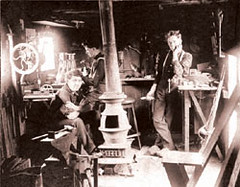
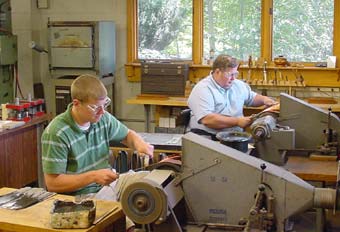
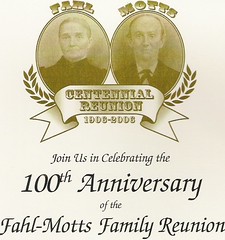
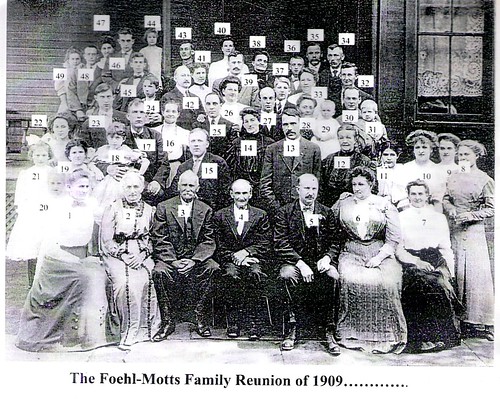
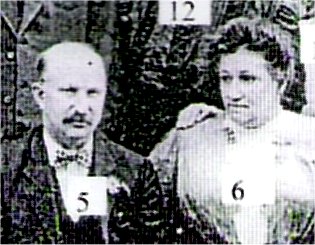
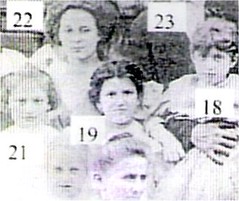
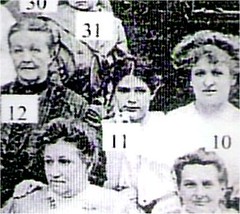
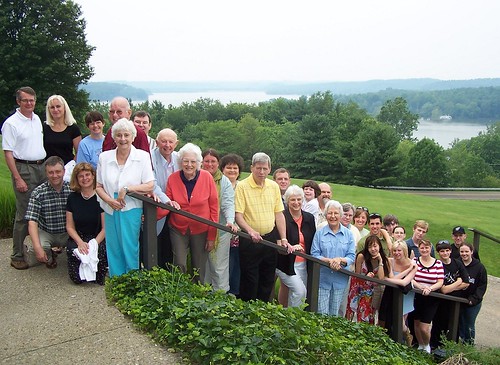
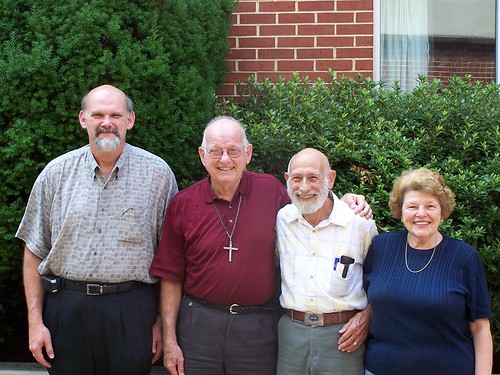

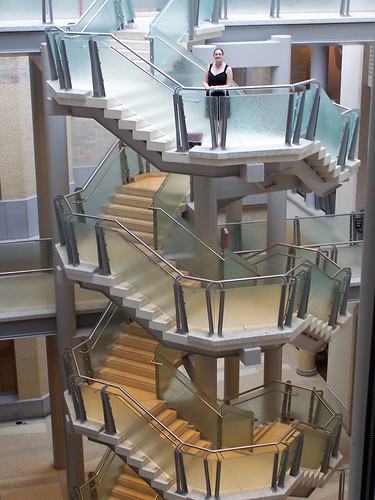
 Hello, My name is Lee and I am a fat person.
Hello, My name is Lee and I am a fat person.
 So here is my magic feather. This stuff is a blend of three viscous dietary fibers mixed in just the right ratio to form the thickest possible glop when mixed with water at a pH similar to the environment in the stomach. You can read about it in
So here is my magic feather. This stuff is a blend of three viscous dietary fibers mixed in just the right ratio to form the thickest possible glop when mixed with water at a pH similar to the environment in the stomach. You can read about it in  In point of fact, studies have shown that glucomannan, when taken with water before meals, can reduce the uptake of carbohydrates. Depending on the dosage the studies have suggested that you can expect glucomannan to "block" between 30 and 130 calories of carbohydrates a day. To put this in perspective, you can accomplish much the same thing by putting an extra ice cube or two in each glass of Coke. In theory those few calories a day can add up to a couple of pounds of lost weight a year but it is scarcely the "magic" pill that people are looking for -- and that the advertisers claim to be selling.
In point of fact, studies have shown that glucomannan, when taken with water before meals, can reduce the uptake of carbohydrates. Depending on the dosage the studies have suggested that you can expect glucomannan to "block" between 30 and 130 calories of carbohydrates a day. To put this in perspective, you can accomplish much the same thing by putting an extra ice cube or two in each glass of Coke. In theory those few calories a day can add up to a couple of pounds of lost weight a year but it is scarcely the "magic" pill that people are looking for -- and that the advertisers claim to be selling.